
The Science of Anatomy is Undergoing a Revival (Op-Ed)
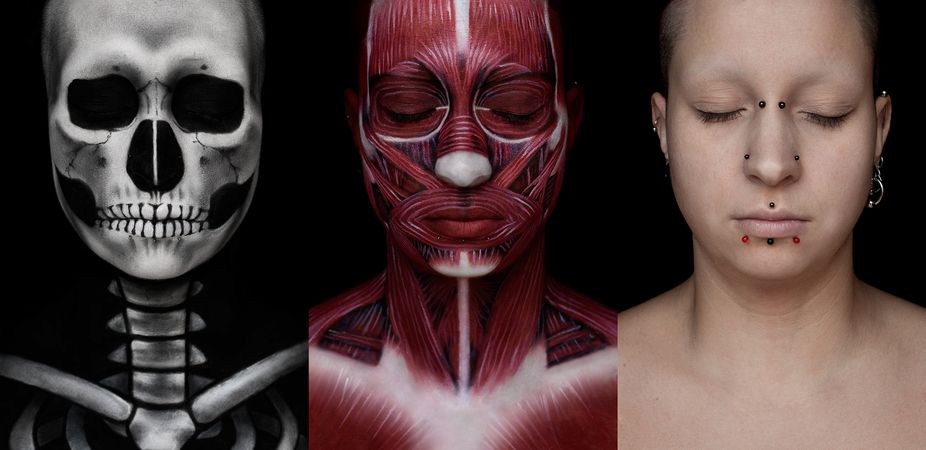
This article was originally published at The Conversation. The publication contributed the article to Live Science's Expert Voices: Op-Ed & Insights.
Only two decades ago, when I was starting my PhD studies at the University of California in Berkeley, there was talk about the death of anatomy as a research subject. That hasn’t happened. Instead the science of anatomy has undergone a renaissance lately, sparking renewed interest not just among researchers but also the public.
I may be biased, but examples from my own work, which is a small part of anatomical research, might showcase what I mean. In 2011, my team found out found why elephants have a false “sixth toe”, which had remained a mystery since it was first mentioned in 1710. Last year, with University of Utah researchers, I helped reveal that crocodiles have “bird-like” lungs in which air flows in a one-way loop rather than tidally back and forth as in mammalian lungs. Subsequent work by those colleagues has shown that monitor lizards do this, too.
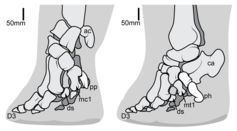
Researchers have also solved the mystery of how monitor lizards got venom glands. They have discovered that lunge-feeding whales have a special sense organ in their chin that helps them engulf vast amounts of food. And like the whales, it seems crocodiles have sense organs in their jaws, which can detect vibrations in the water. Anatomy has even found gears in nature. Turns out that leafhopper insects have tiny gears in their legs that help in making astounding and precise leaps.
If the scientific examples weren’t enough, there are many from popular TV. British viewers have had the delights of anatomy served to them in a BBC TV series called Secrets of Bones, which concluded in March. American viewers are getting anatomical insights in Your Inner Fish, an ongoing TV series on PBS.
Anatomy’s highs and lows
Apart from an anomalous period in the 20th century, such discoveries have always captivated scientists and the public. From the 16th century until the 19th century, human anatomy was one of the top research fields. Anatomist Jean Francois Fernel, who invented the word “physiology”, wrote in 1542:
Anatomy is to physiology as geography is to history; it describes the theatre of events.
This analogy justified the study of anatomy for many early scientists, some of whom also sought to understand it to bring them closer to understanding the nature of God. Anatomy gained impetus, even catapulting scientists such as Thomas Henry Huxley (“Darwin’s bulldog”) into celebrity status, from the realisation that organisms had a common evolutionary history and thus their anatomy did too. Comparative anatomy became a central focus of evolutionary biology.
Sign up for the Live Science daily newsletter now
Get the world’s most fascinating discoveries delivered straight to your inbox.
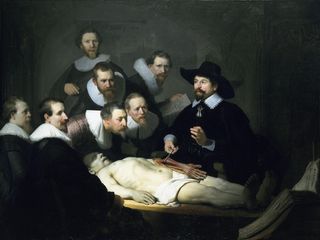
But then something happened to anatomical research that can be hard to put a finger on. Slowly anatomy became a field that was scoffed at as outmoded, irrelevant, or just “solved”. Nothing important seemed left for anatomists to discover.
As a graduate student in the 1990s, I remember encountering this attitude. This apparent eclipse of anatomy accelerated with the ascent of genetics and the flourishing of techniques to study molecular and cellular biology.
One could argue that molecular and cellular biology are anatomy to some degree, especially for single-celled organisms and viruses. But today anatomy at the whole organ, organism or lineage level revels in a renaissance that deserves inspection and reflection on its own terms.
Perhaps the other reason is that most people think we now know human anatomy quite well. But that is not so true. For example, last year Belgian scientists rediscovered the anterolateral ligament of the human knee, overlooked since 1879. They described it, and its importance for how our knees function, in novel detail, and a lot of media attention was drawn to this realisation that there are some things we still don’t understand about our own bodies.
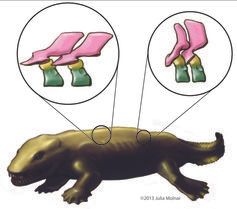
High-tech anatomy
A huge part of this resurgence of anatomical science is technology, especially imaging techniques – we are no longer simply limited to the dissecting knife and light microscope as tools. Digital technology such as three-dimensional imaging combined with computer graphics are allowing researchers to look at body parts in new ways. For instance, using such techniques, we were able to rewrite the evolution of the backbone of early land animals called tetrapods.
Science moves forward the fastest with the development of new tools, and anatomy is a great example of that. Consider this recent example from researchers at the University of Bristol. They found that by using a simple solution that stains animal tissue they can get three-dimensional scans using CT (computed tomography), which is a much more easy to find imaging tool than the more powerful, more expensive MRI (magnetic resonance imaging). This advance enabled them to do “digital dissections”.
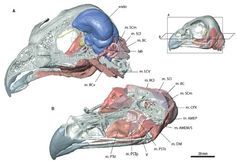
Anatomy has been transformed because we now can peer inside the bodies of organisms in unprecedented detail, sharing and preserving findings in high-resolution digital formats. We can do this without the concern that a unique new species from Brazilian rainforests or exciting fossil discovery from the Cambrian period would be destroyed if we probed certain questions about its anatomy that are not visible from the outside – a perspective in which science had often remained trapped for centuries.
When I started my PhD in 1995, it was a luxury to get a digital camera for research. Similarly, in 2001, I only got intermittent access to a small laser scanner for making 3D digital models of fossils. Both of these are now cheap enough for most researchers to have access to most of the time.
These improvements in technology have totally transformed the way I study anatomy. In the 1990s, you dissected a specimen and it was reduced to little scraps. At best you might have some decent two-dimensional photographs of the dissection and some beetle-cleaned bones as a museum specimen. Now, as routine practice we use imaging techniques to scan specimens, providing data on their internal and external, three-dimensional anatomy in lush detail, before scalpel ever touches skin.
Computational power, too, has grown to the point where incredibly detailed 3D digital models produced from imaging real, whole specimens can be manipulated with ease (even in live animals), so science can better address what anatomy means for animal physiology, behaviour, biomechanics and evolution. We are at the point now where anatomical research seems no longer impeded by technology – the kinds of questions we can ask are more limited by access to good anatomical data (such as rare specimens) than by the ways we acquire and use it.
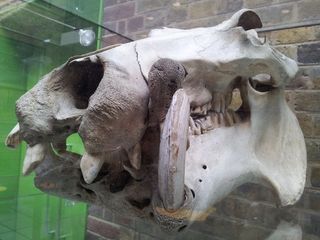
We all like bones
With interesting discoveries, there has also been a keen interest among the public to know about them. Anatomy is for everyone. It is easy to relate to, because we all live in fleshy anatomical bodies that rouse our curiosity from an early age, and everywhere in nature there are surprising parallels with – as well as bizarre differences from – our anatomical body-plans.
This public interest became very clear to me when I was a consultant for the BAFTA award-winning documentary series Inside Nature’s Giants in 2009. I also write an anatomy-based blog called What’s in John’s Freezer?, in which I recount the studies of animal form and function.
Other researchers are exploiting this interest. For instance, the Visible Interactive Animal website, managed by Witmer, has gorgeous pictures and videos of numerous animals. Although aimed at researchers and educators, it is easy enough for the public to view and pursue their curiosities.
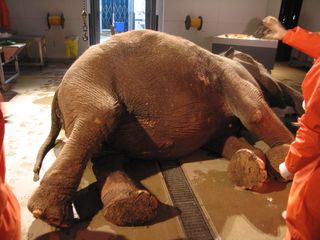
More than a curiosity
Such interest is not just driven by curiosity. Anatomy’s modern relevance is significant too. Take the example of geckos' toes. At the ends of the toes they have millions of fine filaments that can grip almost anything, including highly smooth glass. The skin has been studied in such detail and replicated to produce revolutionary super-adhesives, such as the product “Geckskin”, 16 square inches of which can currently suspend 700 pounds aloft.
Other examples come from bio-inspired innovation in engineering and design, especially in robotics. By studying the humble cockroach, Robert Full at the University of California in Berkeley has created new ways of designing legged robots that can scour earthquake wreckage for survivors or explore faraway planets. By trying to find out how a lizard use its big tail during leaping, they have discovered principles that they then use to construct robots that can jump over or between obstacles. Much of this research relates to how anatomical traits determine the behaviours that a whole, living, dynamic organism is capable of performing.
Anatomical knowledge is key in improving preservation and conservation of wildlife. For example, studying zoo mortality in elephants has revealed that about half of these large animals die in captivity from problems related to their feet, such as arthritis or abscesses in their foot bones or toenail areas.
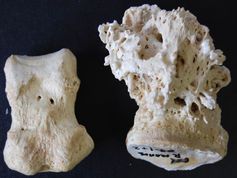
This affects efforts to raise self-sustaining captive populations in Western conservation centres. One obstacle to detecting, monitoring and ultimately preventing these problems is that we know too little about what these foot diseases look like, where they most commonly tend to occur (or how often), and how they vary among species, which again returns to a lack of basic anatomical understanding that we are trying to remedy.
An example of such life-saving help comes from Witmer’s team, who were studying rhinoceros horn anatomy which proved extremely useful in the high-profile, tragic case of the rhinoceros Thandi in South Africa. Thandi’s horn had been cut off by poachers but she survived long enough for veterinarians to try to treat her. Informed by Witmer’s studies, Thandi has survived and is now pregnant.
The struggles of modernity
There is also some culture change among scientists. As a graduate student, anatomists butted heads with molecular biologists more often than was healthy for either of them, competing for funding.
That is now changing because a lot of the time they are working together. However, obstacles remain, and funding is but one of them.
The other is that anatomy as a scientific discipline is clearly flourishing in research while it dwindles in teaching. Fewer and fewer universities seem to be teaching the basics of comparative anatomy that were a mainstay of biology programmes a century ago. Yet anatomy is everywhere now in biology, and in the public eye. It inspires us with its beauty and wonder – such as when you marvel at the glory of beholding a newly discovered species.
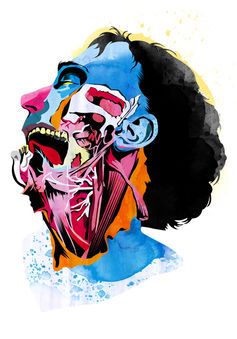
But there is cause for concern that biology students are not learning much about the “theatre of events” that Fernel wrote of, or that medical schools increasingly seem to eschew hands-on anatomical dissection in favour of digital learning. Would you want a doctor to treat you if they mainly knew human anatomy from a computer graphic?
Anatomy has an identity problem, too. Some comes from cultural attitudes, but others come from its own success. Having been integrated into so many aspects of biology, the field could be seen to be driving towards its own oblivion.
I struggled with what label to apply to myself as an early career researcher. I was afraid that calling myself an “anatomist” would render me quaint or unambitious in the eyes of faculty job interview panels, and I know that many of my peers felt the same. I settled on the label “evolutionary biomechanist” as the best term for my speciality. In order to reconstruct evolution or how animals work (biomechanics), we first often need to describe key aspects of anatomy, and we still discover awesome new things about anatomy in the process. I still like that label, but now that my career is stable I speak out more on behalf of anatomical sciences.
Other colleagues that do anatomical research use other labels for themselves such as “physiologist,” or “palaeontologist”, because those words better capture the wide range of research and teaching that they do. But I bet some to do this because they likely still fear the perceived stigma of the word “anatomy” among judgemental scientists. At the same time, many of us are getting hired at medical, veterinary or biology schools because we can teach anatomy-based courses, so there is still hope.
Few would now agree with Honore de Balzac’s 19th century opinion:
No man should marry until he has studied anatomy and dissected at least one woman.
But we should hearken back to what classical scientists knew well: it is to the benefit of science, humanity and the world to treasure the anatomy that is all around us. We inherit that treasure through teaching; to abscond this duty is to abandon this trove. With millions of species around today and countless more in the past, there should always be a wealth of anatomy for everyone to learn from, teach about, and rejoice.
John Hutchinson receives funding from the BBSRC, NERC, Leverhulme Trust and Royal Society.
This article was originally published on The Conversation. Read the original article. Follow all of the Expert Voices issues and debates — and become part of the discussion — on Facebook, Twitter and Google +. The views expressed are those of the author and do not necessarily reflect the views of the publisher. This version of the article was originally published on Live Science.












